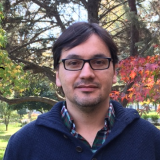Seaweed harvest has denuded many areas of the sea floor, threatening marine ecosystems and the livelihood of coastal communities. Recently, small operators have begun to cultivate seaweed. This paper studies the role of fishing and agriculture, and their interactions with risk and time preferences, in the uptake of seaweed aquaculture. We use a Heckman selection model to study the decision to participate and expansion of production in seaweed aquaculture in Chile. We find that experience with seaweed farming, ecological benefits, and perception of well-suited areas increase participation in seaweed aquaculture. In addition, more contacts within the industry, a surveillance system against theft, and a shorter authorization period to farm increase seaweed production. Among land farmers, while more risk-tolerant producers participate more in seaweed aquaculture, more patient producers cultivate higher levels. We argue that policy design should consider the particularity of other sectors that are synergetic with aquaculture.
Transition Patterns of Fishermen and Land Farmers into Small-Scale Seaweed Aquaculture: The Role of Risk and Time Preferences
Country
Sustainable Development Goals
Publication reference
Salazar, C., Jaime, M., & Quiroga, M. (2021). Transition Patterns of Fishermen and Land Farmers into Small-Scale Seaweed Aquaculture: The Role of Risk and Time Preferences. Marine Resource Economics, 36(3), 269–288. doi:10.1086/714417


